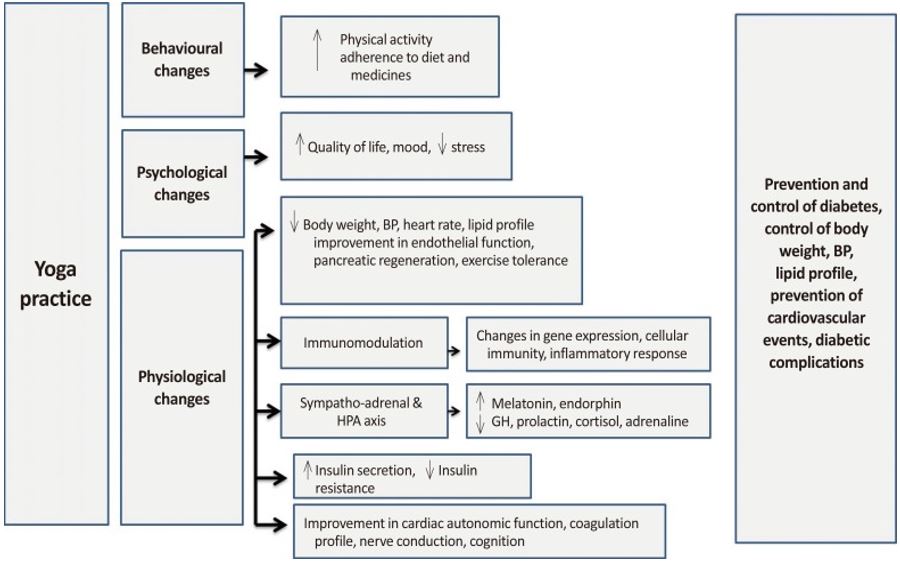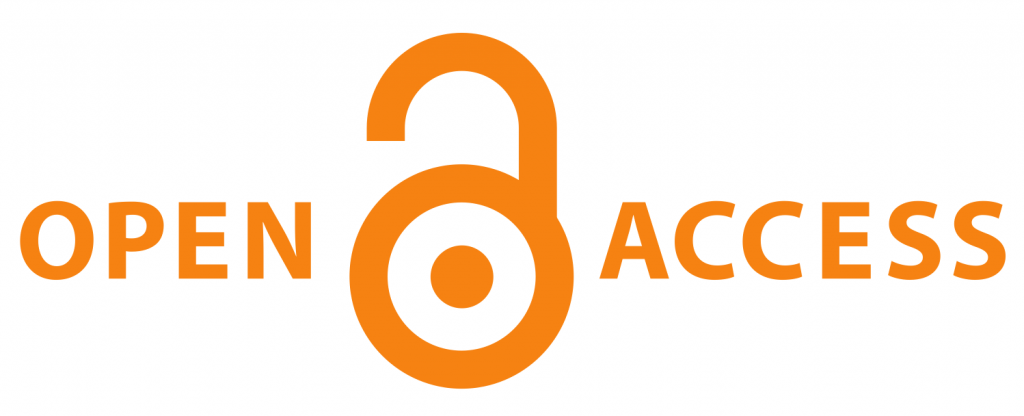Diabetes Mellitus prevention and management with Yoga
Yoga in diabetes
DOI:
https://doi.org/10.21760/jaims.10.2.35Keywords:
Diabetes mellitus, Lifestyle, Diet, Yoga, PranayamaAbstract
Diabetes mellitus (DM), a chronic metabolic disorder characterized by hyperglycemia, has become a global health concern. Lifestyle modifications, including physical activity and stress management, play a crucial role in its prevention and management. Yoga, an ancient mind-body practice, has gained recognition as a complementary approach to conventional diabetes care. This abstract explores the potential of yoga in preventing and managing diabetes by addressing its multifactorial causes. Yoga combines physical postures (asanas), breathing techniques (pranayama), and meditation (dhyana), which collectively improve insulin sensitivity, reduce blood glucose levels, and enhance overall metabolic health. Regular practice of yoga has been shown to lower fasting and postprandial blood glucose levels, improve lipid profiles, and reduce oxidative stress, all of which are critical in diabetes management. Additionally, yoga promotes weight loss and reduces visceral fat, key factors in preventing type 2 diabetes. Stress is a significant contributor to diabetes, as it triggers the release of counter-regulatory hormones like cortisol, which elevate blood glucose levels. Yoga's emphasis on relaxation and mindfulness helps reduce stress, thereby improving glycemic control. Furthermore, yoga enhances cardiovascular health, reduces inflammation, and improves autonomic nervous system function, all of which are beneficial for individuals with diabetes.
Downloads
References
Madhavakara. Madhava Nidanam. In: Srikantha Murthy KR, editor. Varanasi: Chaukamba Oriental Publisher & Distributor, Krishnadas Academy; 1987. Ch. 33, p. 116, 119. Sloka ref. 20–36.
Sarangadhara. Sarangadhara Samhita. In: Srikantha Murthy KR, editor. Varanasi: Chaukamba Oriental Publisher & Distributor; 1984. Pradhama Kanda, Ch. 7; Madhyama Kanda, Ch. 2, p. 12. Ref. 37, 69, 71, 108, 171.
Vagbhata. Ashtanga Hridayam-Nidanasthanam. In: Srikantha Murthy KR, editor. Varanasi: Chaukamba Oriental Publisher & Distributor, Krishnadas Academy; 1992. Vol. 2, Ch. 10, p. 92–99.
Thripathi I, Thripathi DS. Yogaratnakaram-Pramehaprakaranam. Varanasi: Chaukamba Krishnadas Academy; 1998. Ch. Prameha Nidana, p. 622–641.
Suresh Babu S. The Principles and Practice of Kaya Chikitsa. Vol. 3. Varanasi: Chaukamba Oriental Publisher & Distributor, Krishnadas Academy; 2007. p. 100–109.
Shalinee, Mishra D, Kamal K, Gupta AK, Sharma KK. Shankhaprakshalana: a yogic karma for purification. Int J Ayurvedic Herb Med. 2012;2:578–581.
Sreedevi A, Gopalakrishnan UA, Ramaiyer SK, Kamalamma L. A randomized controlled trial of the effect of yoga and peer support on glycaemic outcomes in women with type 2 diabetes mellitus: a feasibility study. BMC Complement Altern Med. 2017;17:100. doi:10.1186/s12906-017-1574-x.
Malhotra V, Singh S, Tandon OP, Sharma SB. The beneficial effect of yoga in diabetes. Nepal Med Coll J. 2005;7:145–147.
Pal GK. Effects of pranayama on cardiovascular health. Int J Clin Exp Physiol. 2016;3:57–58.
Bal BS. Effects of short-term practice of Anuloma Viloma Pranayama on components of health-related fitness. Educ Prac Innov. 2015;2:10–18.
Srivastava S, Goyal P, Tiwari SK, Patel AK. Interventional effect of Bhramari Pranayama on mental health among college students. Int J Ind Psychol. 2017;4:29–33.
Nivethitha L, Mooventhan A, Manjunath NK. Effects of various pranayama on cardiovascular and autonomic variables. Anc Sci Life. 2016;36:72–77. doi:10.4103/asl.ASL_178_16.
Singh RB, Wilczynska-Kwiatek A, Fedacko J, Pella D, De Meester F. Pranayama: the power of breath. Int J Disabil Hum Dev. 2009;8:141–153.
Ricard M, Lutz A, Davidson RJ. Mind of the meditator. Sci Am. 2014;311:38–45. doi:10.1038/scientificamerican1114-38.
Chung SC, Brooks MM, Rai M, Balk JL, Rai S. Effect of Sahaja yoga meditation on quality of life, anxiety, and blood pressure control. J Altern Complement Med. 2012;18:589–596. doi:10.1089/acm.2011.0038.
Keyworth C, Knopp J, Roughley K, Dickens C, Bold S, Coventry P. A mixed-methods pilot study of the acceptability and effectiveness of a brief meditation and mindfulness intervention for people with diabetes and coronary heart disease. Behav Med. 2014;40:53–64. doi:10.1080/08964289.2013.834865.
Gurjar AA, Ladhake SA, Thakare AP. Analysis of acoustic of “OM” chant to study its effect on nervous system. Int J Comput Sci Netw Secur. 2009;9:363–367.
Bhavanani AB, Madanmohan, Sanjay Z, Vithiyalakshmi SL. Immediate cardiovascular effects of pranava relaxation in patients with hypertension and diabetes. Biomed Hum Kinet. 2012;4:66–69.
Amita S, Prabhakar S, Manoj I, Harminder S, Pavan T. Effect of yoga-nidra on blood glucose level in diabetic patients. Indian J Physiol Pharmacol. 2009;53:97–101.















